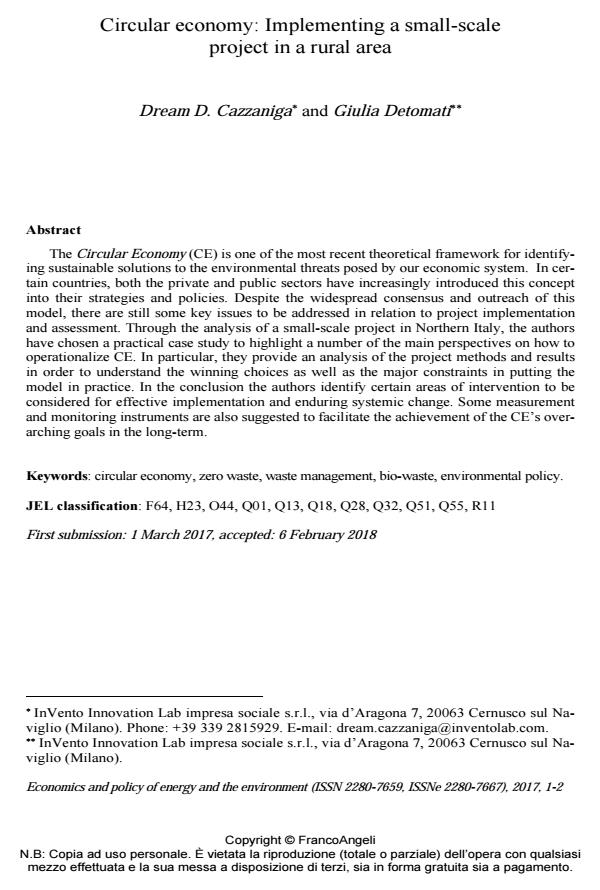Circular economy: Implementing a small-scale project in a rural area
Journal title ECONOMICS AND POLICY OF ENERGY AND THE ENVIRONMENT
Author/s Dream D. Cazzaniga, Giulia Detomati
Publishing Year 2017 Issue 2017/1-2
Language English Pages 27 P. 191-217 File size 1290 KB
DOI 10.3280/EFE2017-001010
DOI is like a bar code for intellectual property: to have more infomation
click here
Below, you can see the article first page
If you want to buy this article in PDF format, you can do it, following the instructions to buy download credits

FrancoAngeli is member of Publishers International Linking Association, Inc (PILA), a not-for-profit association which run the CrossRef service enabling links to and from online scholarly content.
The Circular Economy (CE) is one of the most recent theoretical framework for identi-fying sustainable solutions to the environmental threats posed by our economic system. In certain countries, both the private and public sectors have increasingly introduced this concept into their strategies and policies. Despite the widespread consensus and outreach of this model, there are still some key issues to be addressed in relation to project implementation and assessment. Through the analysis of a small-scale project in Northern Italy, the authors have chosen a practical case study to highlight a number of the main perspectives on how to operationalize CE. In particular, they provide an analysis of the project methods and results in order to understand the winning choices as well as the major constraints in putting the model in practice. In the conclusion the authors identify certain areas of intervention to be considered for effective implementation and enduring systemic change. Some measurement and monitoring instruments are also suggested to facilitate the achievement of the CE’s overarching goals in the long-term.
Keywords: Circular economy, zero waste, waste management, bio-waste, environmental policy
Jel codes: F64,H23,O44,Q01,Q13,Q18,Q28,Q32,Q51,Q55,R11
- The battle of the buzzwords: A comparative review of the circular economy and the sharing economy concepts Marvin Henry, Daan Schraven, Nancy Bocken, Koen Frenken, Marko Hekkert, Julian Kirchherr, in Environmental Innovation and Societal Transitions /2021 pp.1
DOI: 10.1016/j.eist.2020.10.008
Dream D. Cazzaniga, Giulia Detomati, Circular economy: Implementing a small-scale project in a rural area in "ECONOMICS AND POLICY OF ENERGY AND THE ENVIRONMENT" 1-2/2017, pp 191-217, DOI: 10.3280/EFE2017-001010